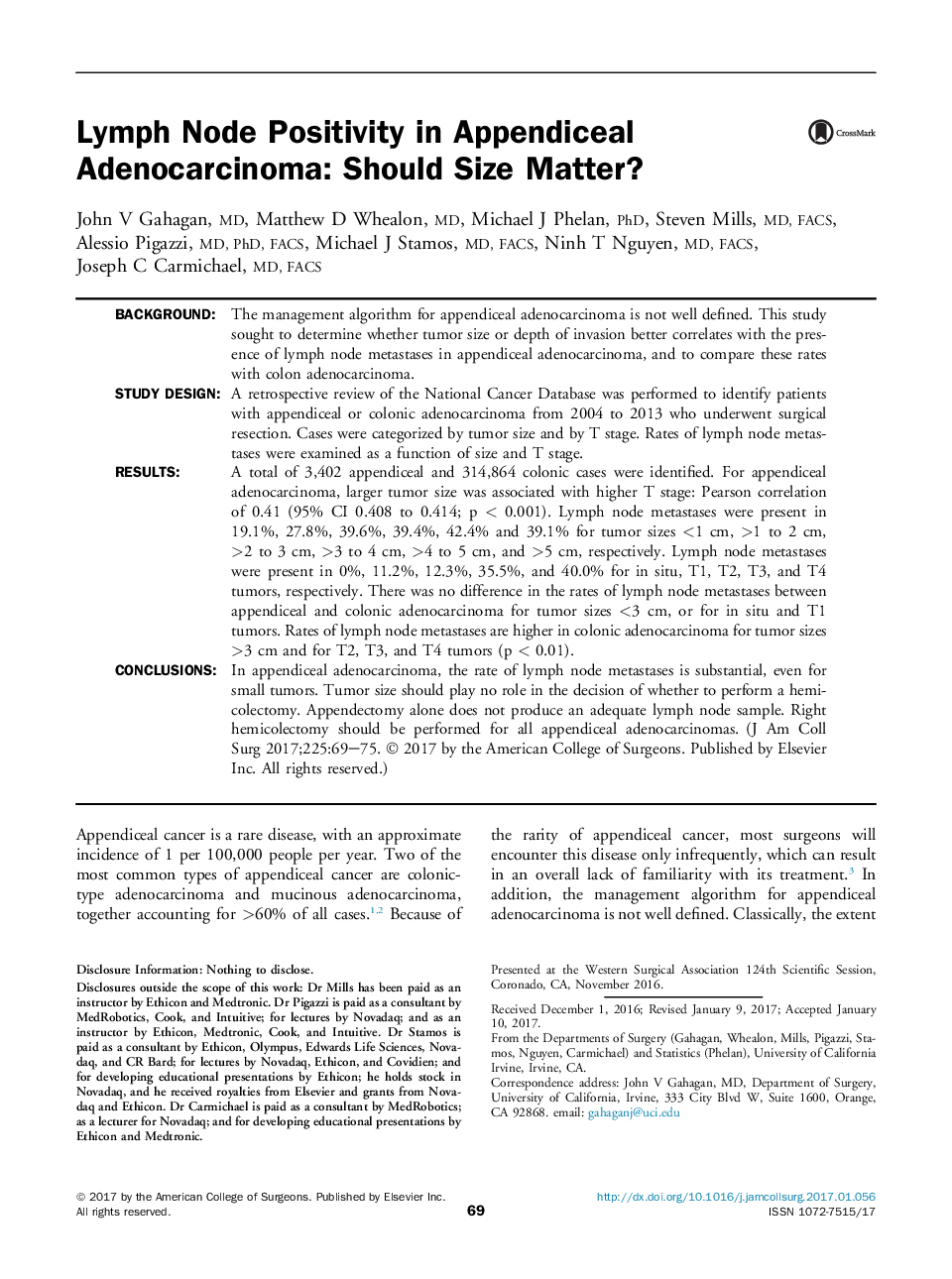| Article ID | Journal | Published Year | Pages | File Type |
|---|---|---|---|---|
| 5733400 | Journal of the American College of Surgeons | 2017 | 7 Pages |
BackgroundThe management algorithm for appendiceal adenocarcinoma is not well defined. This study sought to determine whether tumor size or depth of invasion better correlates with the presence of lymph node metastases in appendiceal adenocarcinoma, and to compare these rates with colon adenocarcinoma.Study DesignA retrospective review of the National Cancer Database was performed to identify patients with appendiceal or colonic adenocarcinoma from 2004 to 2013 who underwent surgical resection. Cases were categorized by tumor size and by T stage. Rates of lymph node metastases were examined as a function of size and T stage.ResultsA total of 3,402 appendiceal and 314,864 colonic cases were identified. For appendiceal adenocarcinoma, larger tumor size was associated with higher T stage: Pearson correlation of 0.41 (95% CI 0.408 to 0.414; p < 0.001). Lymph node metastases were present in 19.1%, 27.8%, 39.6%, 39.4%, 42.4% and 39.1% for tumor sizes <1 cm, >1 to 2 cm, >2 to 3 cm, >3 to 4 cm, >4 to 5 cm, and >5 cm, respectively. Lymph node metastases were present in 0%, 11.2%, 12.3%, 35.5%, and 40.0% for in situ, T1, T2, T3, and T4 tumors, respectively. There was no difference in the rates of lymph node metastases between appendiceal and colonic adenocarcinoma for tumor sizes <3 cm, or for in situ and T1 tumors. Rates of lymph node metastases are higher in colonic adenocarcinoma for tumor sizes >3 cm and for T2, T3, and T4 tumors (p < 0.01).ConclusionsIn appendiceal adenocarcinoma, the rate of lymph node metastases is substantial, even for small tumors. Tumor size should play no role in the decision of whether to perform a hemicolectomy. Appendectomy alone does not produce an adequate lymph node sample. Right hemicolectomy should be performed for all appendiceal adenocarcinomas.
